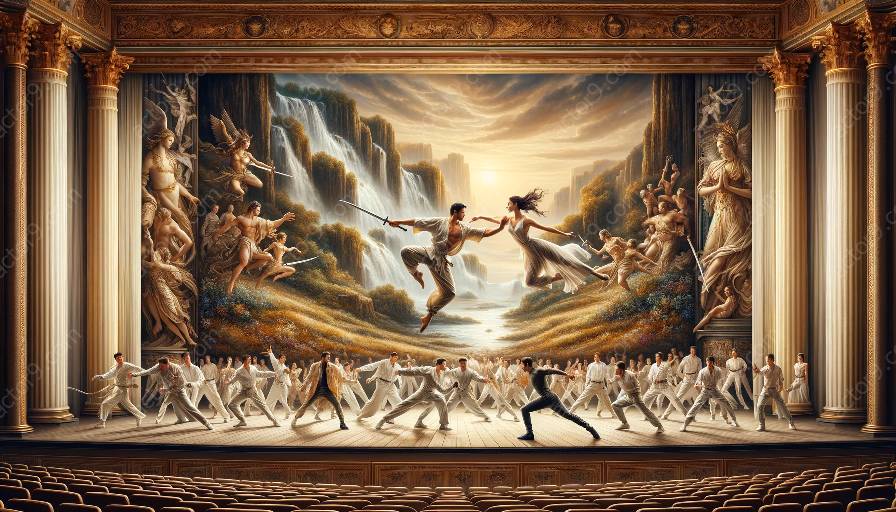Stage combat is an integral part of theater and acting, involving the art of simulating physical combat for dramatic effect. However, the nuances of adapting stage combat for different historical periods and cultures are as diverse as the historical contexts and cultural representations themselves.
The Art of Stage Combat
Before delving into the nuances of adapting stage combat for different historical periods and cultures, it's crucial to understand the fundamentals of the art of stage combat. Stage combat encompasses a wide range of techniques, including unarmed combat, swordplay, and other weapon-based simulations. It requires precise choreography, controlled movements, and a deep understanding of physical storytelling.
Stage combat strives to uphold the illusion of violence while ensuring the safety of the performers. It combines physical prowess with acting skills, requiring actors to embody their characters convincingly, even in the midst of intense combat sequences.
Adapting Stage Combat Across Historical Periods
When adapting stage combat for different historical periods, it's essential to consider the weaponry, fighting styles, and cultural attitudes towards combat prevalent in each era. For example, combat in ancient Rome may involve gladiatorial techniques and distinct armor, whereas combat in medieval Europe could center around longswords, shields, and armor tailored to the period.
Choreographers and performers must conduct thorough research to authentically capture the essence of historical combat. The movements, stances, and strategies should align with the specific time period, adding depth and authenticity to the overall production.
Adapting Stage Combat for Various Cultures
Similarly, the nuances of adapting stage combat for different cultures require a deep understanding of the unique martial arts and combat traditions associated with each cultural context. For instance, the fluidity and acrobatic movements of Asian martial arts may be incorporated when representing combat scenes from East Asian history or mythology.
Moreover, cultural values and beliefs shape the perception and portrayal of combat in theater. Traditional war dances, ritualistic combat, and symbolic gestures may be integrated into stage combat to reflect the cultural nuances of a particular society or civilization.
Combining Authenticity with Artistic Expression
Adapting stage combat for different historical periods and cultures demands a delicate balance between authenticity and artistic expression. While fidelity to historical accuracy is crucial, creative liberties are often taken to enhance the visual impact and dramatic intensity of combat scenes.
Choreographers and directors must navigate the fine line between honoring historical and cultural accuracy while infusing the combat sequences with creativity and theatrical flair. This process involves meticulous collaboration between fight directors, actors, and cultural consultants to ensure a compelling yet respectful portrayal of combat from various historical and cultural perspectives.
Conclusion
In conclusion, the nuances of adapting stage combat for different historical periods and cultures require a multifaceted approach that considers historical accuracy, cultural authenticity, and artistic innovation. By blending the fundamentals of the art of stage combat with specific historical and cultural elements, theater and acting can achieve a more nuanced and enriched representation of combat across diverse contexts.















































